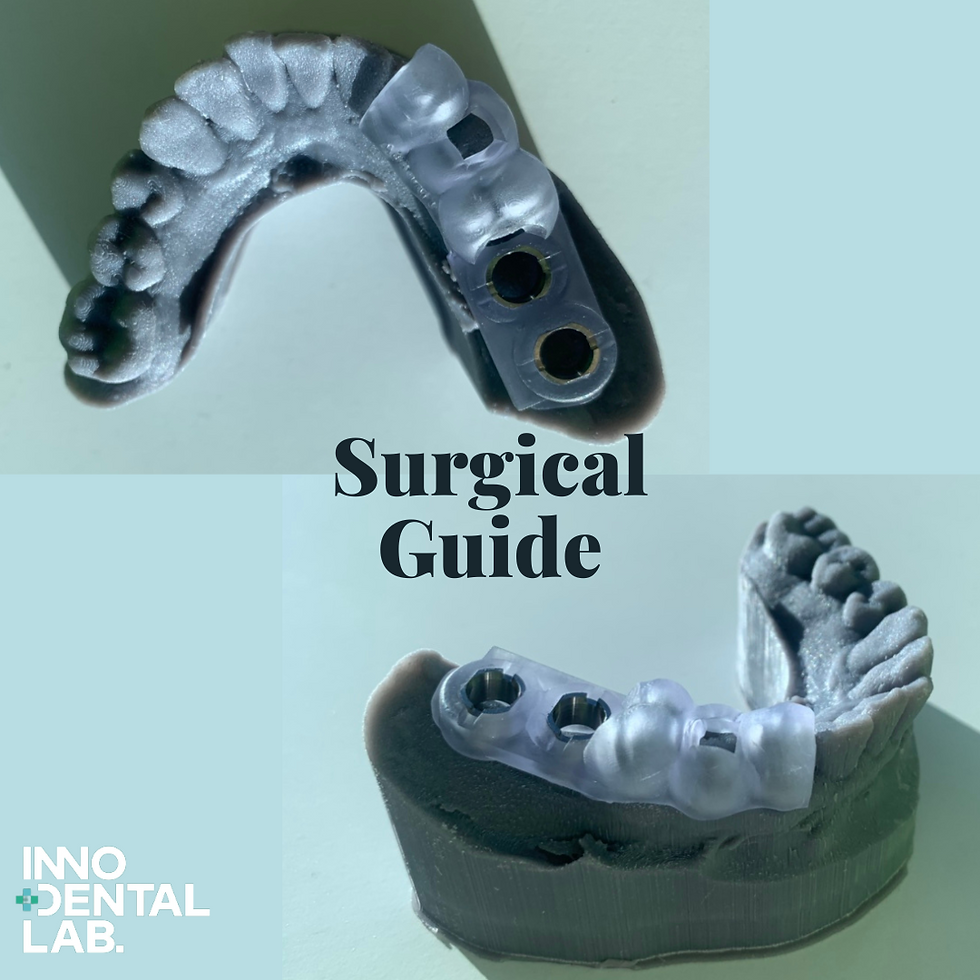2025 Dental Care Trends: How the Future of Dentistry is Taking Shape
- Innodent

- Aug 14
- 4 min read
The landscape of dental care is transforming rapidly as we head into 2025. With the integration of cutting-edge technology, patient care is becoming more personalized and efficient. This blog post will explore the key trends shaping the future of dentistry, from the impact of AI to sustainable practices.
AI and Digital Technology Revolutionizing Diagnosis
Artificial Intelligence (AI) is reshaping the way dental professionals approach diagnosis and treatment planning. Advanced AI systems can analyze X-rays and oral scans to detect issues like cavities and cracks with impressive accuracy. This technology not only streamlines the diagnostic process but also enhances treatment outcomes.
Some dental clinics are now using Large Language Models (LLMs) such as ChatGPT. These models assist in developing personalized treatment plans by engaging in interactive consultations with patients. By providing tailored recommendations, patients gain a deeper understanding of their oral health.
Benefits of AI in Dentistry
Improved Diagnostic Accuracy: AI systems can identify problems that may be missed during manual examinations.
Faster Treatment Planning: Automated analysis speeds up the entire process, enabling quicker intervention.
Better Patient Understanding: By using conversational AI, patients can ask questions and clarify doubts in real-time.
Precision and Speed with 3D Printing & CAD/CAM
The advent of 3D printing in dentistry is a game-changer. This technology allows for the custom production of crowns, bridges, aligners, and surgical guides within a matter of hours. When combined with Computer-Aided Design (CAD) and Computer-Aided Manufacturing (CAM) systems, dental clinics can now design, create, and fit restorations all in the same visit.
Advantages of 3D Printing in Dentistry
Rapid Production: Most restorations can be completed in just a few hours.
Custom Fit: Each product is tailored to the individual's dental structure, resulting in a better fit and enhanced comfort.
Higher Patient Satisfaction: Fewer visits mean less inconvenience and more positive experiences for patients.
Minimally Invasive and Regenerative Dentistry
The focus of modern dental care is shifting toward minimally invasive techniques and regenerative treatments. Approaches like Atraumatic Restorative Treatment (ART) remove decay without traditional drilling, often eliminating the need for anesthesia. This technique is particularly beneficial for nervous patients and children.
Innovative Regenerative Techniques
Regenerative Endodontics: This method aims to restore damaged dental pulp instead of extracting it, helping to preserve the natural tooth's vitality.
Keratin-Based Enamel Regeneration: Emerging products containing proteins from hair or wool may soon allow for the rebuilding of damaged enamel.
Magnetic Nanobots: These microscopic bots could offer natural sealing on tooth surfaces, providing long-lasting relief from sensitivity.
Faster, Less Painful Treatments with Lasers
The use of lasers in dental care is revolutionizing treatment methods, making procedures faster and more comfortable. For instance, at King George’s Medical University (KGMU) in India, Laser Root Canal Treatment (RCT) is significantly reducing treatment times and discomfort while preserving more of the natural tooth structure compared to traditional techniques.
Benefits of Laser Treatments
Reduced Treatment Time: Laser procedures are often quicker, minimizing patient chair time.
Less Discomfort: Many laser treatments result in less pain, decreasing the need for anesthesia.
Conservation of Natural Tooth Structure: Lasers can target only diseased tissue, leaving healthy structures intact.

The Rise of No-Prep Veneers in Cosmetic Dentistry
The demand for a perfect smile is increasing, particularly among younger patients. No-prep veneers are emerging as a popular choice because they are ultra-thin porcelain shells that can be applied without significant reduction of natural tooth enamel. This technique allows for a beautiful, “Instagram-ready smile” with minimal discomfort.
Impact of Social Media on Cosmetic Dentistry
The influence of platforms like Instagram has intensified the desire for non-invasive cosmetic procedures, including:
Clear Aligners: These provide a discreet alternative to traditional braces.
Whitening Treatments: Quick in-office whitening has become a standard service in many clinics.
Composite Bonding: This allows for the quick repair of minor cosmetic issues.
The thirst for perfection has made cosmetic dentistry an essential part of practices catering to younger demographics.
Tele-Dentistry and Eco-Friendly Clinics
Tele-dentistry is on the rise, enabling patients to consult with dental professionals virtually. This not only saves time but also allows for easier access to care, especially for those in remote areas. Virtual consultations can involve assessments and treatment plans without requiring an in-person visit for non-essential procedures.
Sustainable Practices in Dentistry
As awareness of environmental issues grows, more dental clinics are adopting eco-friendly practices. This includes:
Biodegradable Materials: Many clinics are starting to use materials that break down more easily.
Digital Records: Reducing paper usage with electronic records minimizes waste.
Recycling Systems: Clinics are implementing systems to recycle used materials responsibly.
Creating a sustainable practice is a way not only to attract eco-conscious patients but also to contribute positively to the environment.
Final Thoughts
The dental field in 2025 is undoubtedly being defined by precision, patient-centered care, and sustainability. Incorporating AI technology, 3D printing, and regenerative treatments is central to improving patient experiences and outcomes. As we push forward, it is crucial for dental professionals to embrace these innovations, ensuring that care is not only effective but also aligned with the evolving needs of society.
Now is the perfect time to stay ahead of the curve. By adapting to these advancements in dental care, practitioners can better serve their patients and help shape the future of dentistry for years to come. 🦷




Comments